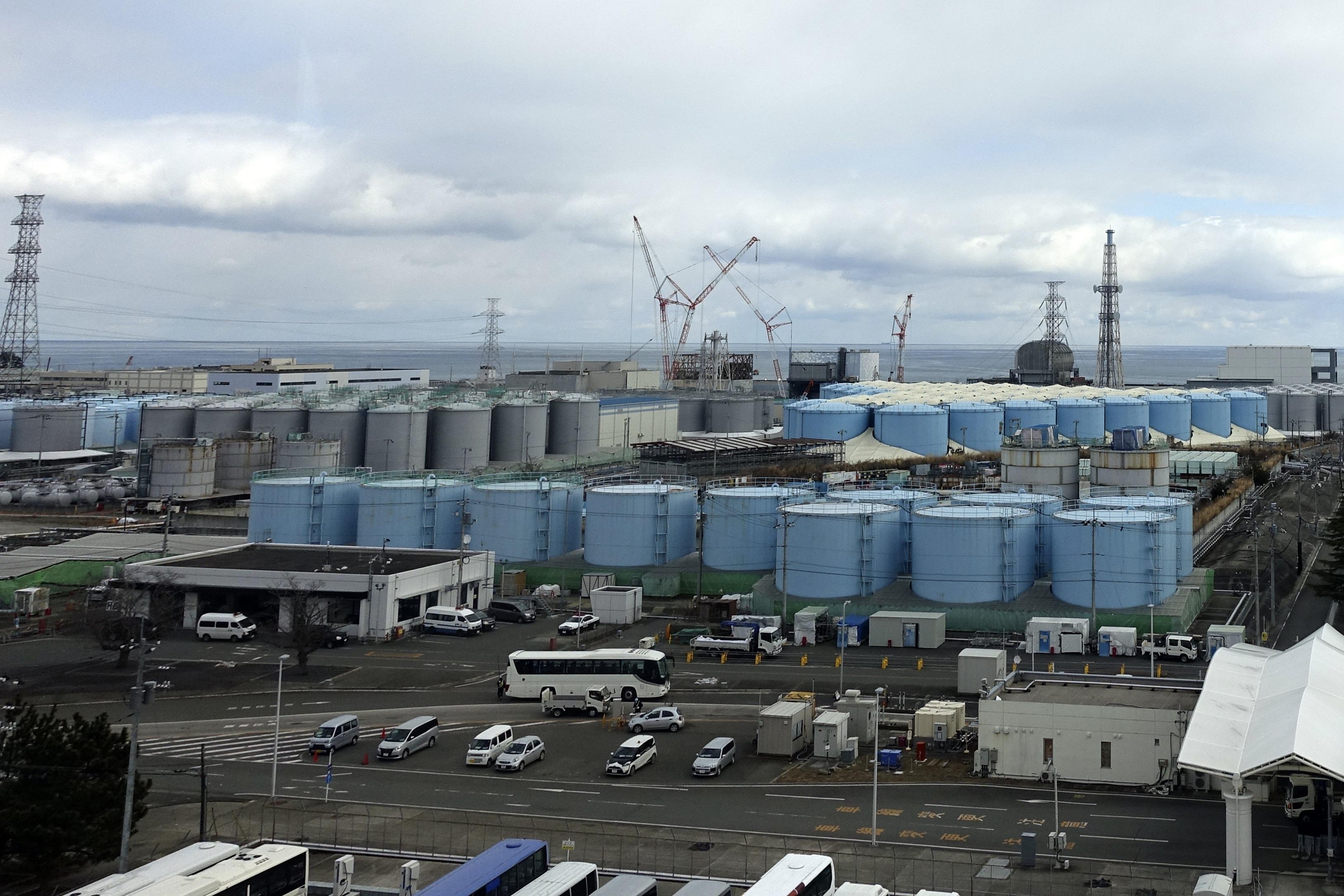 This photo taken on Feb 22, 2023, shows some of about 1,000 huge tanks holding treated but still radioactive wastewater at the Fukushima Daiichi nuclear power plant, operated by Tokyo Electric Power Company Holdings (TEPCO), in Okuma town, northeastern Japan. (PHOTO / AP)
This photo taken on Feb 22, 2023, shows some of about 1,000 huge tanks holding treated but still radioactive wastewater at the Fukushima Daiichi nuclear power plant, operated by Tokyo Electric Power Company Holdings (TEPCO), in Okuma town, northeastern Japan. (PHOTO / AP)
TOKYO - The growing amount of sewage sludge tainted with radioactive substances emanating from the Fukushima nuclear disaster is pushing the storage facility to its limit, local media reported.
Twelve years after the devastating earthquake and tsunami that occurred in March 2011, the current situation is likely to undermine the premise of decommissioning nuclear reactors, Japan's Asahi Shimbun said.
According to Tokyo Electric Power Company (TEPCO), the plant's operator, the sludge is muddy waste containing radioactive substances produced during the purification of contaminated nuclear water with a multi-nuclide removal facility.
ALSO READ: Concerns aired over Japan's discharge plan
High Integrity Containers (HICs), which are storage vessels made of polyethylene and filled with sludge, are now kept inside the temporary storage facility located on the high ground south of units 1 to 4 at the power plant. The sludge will be stored there temporarily until a decision is made on how to dispose of it.
TEPCO is working on capacity expansion for the storage facility to last until around June 2027, but without taking into account the additional sludge generated when the substandard water is purified by the multi-nuclide removal equipment before the nuclear wastewater is discharged into the sea, according to the report on Sunday
The sludge needs to be stored in concrete tanks as it contains an average of more than 10 millisieverts of radiation per hour, which would make a worker at the plant reach the annual radiation limit in just five hours.
As of March 2, there were 4,143 HICs, more than 98 percent of the total capacity, which is likely to reach its limit this spring, the newspaper reported, adding that the number of HICs has increased by an average of one every two days in the past year.
READ MORE: Japan urged to heed concerns on nuclear wastewater disposal
After being hit by the devastating earthquake and tsunami in March 2011, the facility in northeastern Japan experienced an unusual triple meltdown and has been generating a massive amount of water tainted with radioactive substances from cooling down the nuclear fuel in the reactor buildings.
TEPCO is working on capacity expansion for the storage facility to last until around June 2027, but without taking into account the additional sludge generated when the substandard water is purified by the multi-nuclide removal equipment before the nuclear wastewater is discharged into the sea, according to the report on Sunday.
ALSO READ: Japan urged not to dump contaminated water into sea
If additional storage facilities are needed, it is unclear whether there will be room to accommodate them and the treatment of nuclear wastewater would be stalled without a place for extra storage, the paper added.



